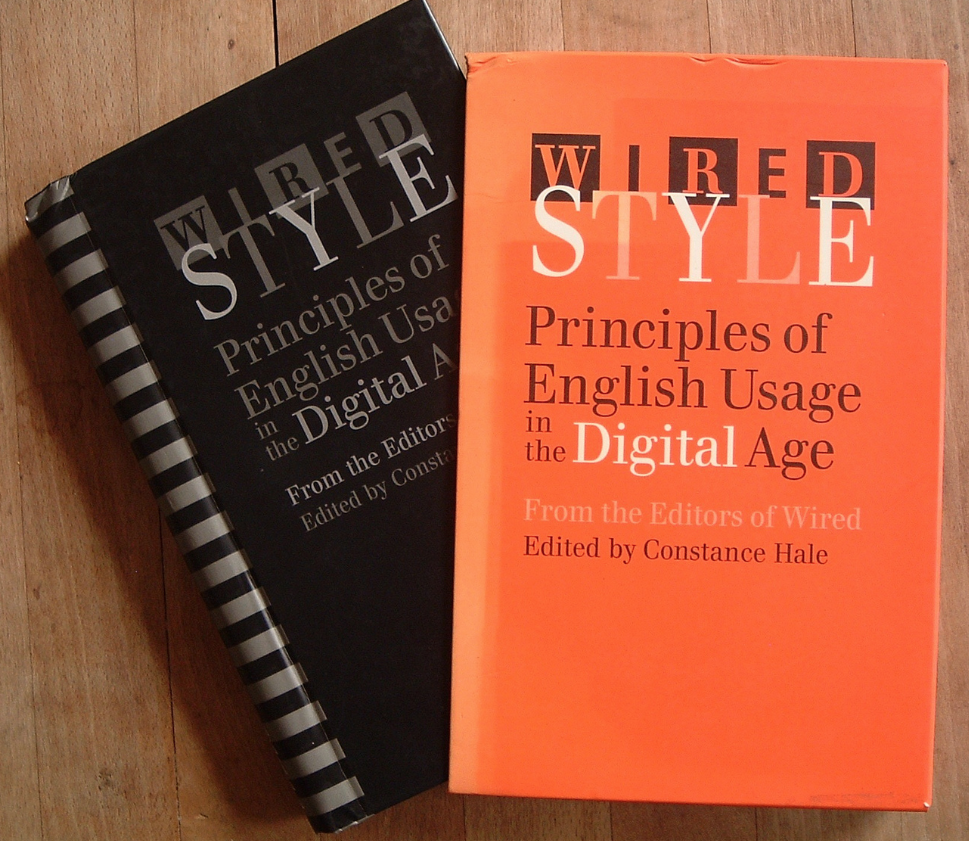wired for words.
What a 17-year-old book on the language of technology means today.
On Saturday mornings, I’ll often be found in Leamington’s Oxfam Books and Music on Regent Street. It’s a great place to pick up second-hand vinyl and old Penguin paperbacks, and you never quite know what you’re going to find.
The other day I snaffled ‘Wired Style — Principles of English Usage in the Digital Age’ for a couple of quid, which got me thinking not only how rapidly English is evolving now, but how technology is constantly changing the way we write and speak. It was ever thus, I suppose, but these days it’s happening at warp speed. Doing what I do, I’m a bit of a sucker for style guides, and own everything from the Economist and the Guardian, to Oxford and Fowler’s. But ‘Wired Style’ has a different agenda, proclaiming itself a celebration of writing that “jacks us into the soul of a new society”.My copy of ‘Wired Style’ is a first edition published in 1996, and many of the listings are already redundant or retro. Social media was still eight years away when it first came out, and there were no iPhones, iPads or Kindles yet. ‘Tweet’, ‘google’ and ‘status’ had completely different meanings, trolls and apps were a bit thinner on the ground too. It’s incredible how quickly neologisms pass into the vernacular, and become as natural and familiar as centuries-old phrases coined by Shakespeare.
Flawed in principle... a museum piece, or a potent reminder of how fast the English language is evolving? But ‘Wired Style’ is not quite a museum piece — the underlying principles of the 17-year-old volume still hold true. Nitty-gritty points of style like dealing with capital letters in the middle of words (QuickTime, WordPerfect etc), the difference between email quotes and spoken quotes, prefixes, and many more hints and tips, are still handy enough. And the commandment “if in doubt, close it up” is next to invaluable. But its main premise is truer than ever. How do we navigate the “shifting verbal currents of the post-Gutenberg era”? “How can we write about machines without losing a sense of humanity and poetry?”These are the big questions I grapple with most days writing for the likes of Nokia, Hitachi, Epson, Philips, and various others. How do you bring to life (often new, and often complex) ideas about technology in a way that the man in the street understands? Where do you pitch it? How do you appear ‘in the know’, without shooting over people’s heads? How do you take the boring specs, facts, and figures, the jargon and the endless acronyms, and translate them into something that sounds great and compelling? There’s no denying that digital technology is here to stay, part of our lives as much as electricity or the motor car. But it still needs to be written about with soul and skill to make a connection and be truly meaningful.For me the nagging question remains, however — why on earth was ‘Wired Style’ published as a book in the first place? For more gravitas, perhaps? Surely a guide to the “shifting verbal currents of the post-Gutenberg era” would be better served on an up-to-date and updatable medium like a website.
